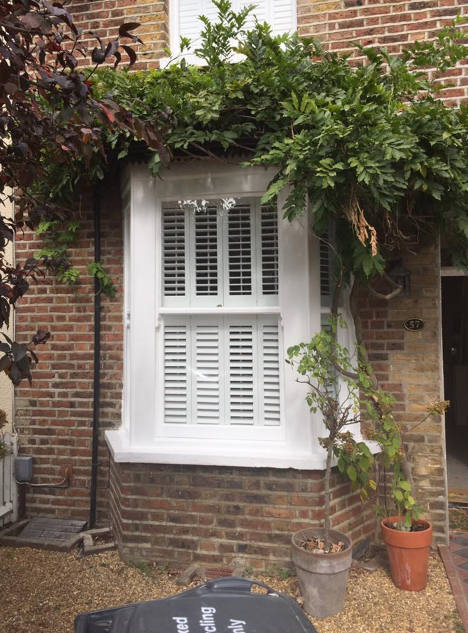Top tips for draught proofing your sash windows

Sliding sash windows are one of the most recognisable architectural features of a period home, especially in buildings dating from the Georgian, Victorian and Edwardian eras. Unfortunately, the passage of time is not always kind to traditional timber windows. The result can be rattly windows that let the draught in and produce decidedly un-cosy interiors. What’s more, if water ingress is also an issue, timber decay may have set in.
Luckily, there’s no need to throw the proverbial baby out with the bathwater. Rather than taking the drastic step of fitting modern window replacements, Sash Window Experts are here to tell you that it is perfect possible to draught proof your original sash windows. As the proud owner of a heritage home, wouldn’t you want to do everything you can to preserve the characteristic features of your property while maintaining its future value?
We passionately believe in the preservation of our national architectural heritage. Our experienced team of expert craftsmen have made it their mission to save one sash window at a time, with a menu of services to repair, refurbish and renovate all kinds of sash windows.
Here’s our professional advice on how to deal with draught proofing old sash windows.
1 – What exactly is the problem?
First, it’s a good idea to identify exactly why your old sash windows stick, rattle and let in draughts. Age and decay can manifest itself in many ways such as cracked putty, damaged sash cords, unbalanced weights, rotten timbers and failed joints.
Depending on the exact issue, you may not need to take radical action. Many draught proofing techniques can be implemented on your existing frames, and with very little cost. The net result to you is a warmer home and lower heating bills, no draughts or rattling, and less outside noise.
However, before you carry out any of the DIY options mentioned below, we would recommend that you seek advice from an experienced professional such as Sash Window Experts, especially if your sash windows are very old or the property is a designated listed building.
2 – Draught proofing your own sash windows
As mentioned above, draught proofing and sealing sash windows don’t need to be expensive. There are various simple options you can pursue – these include:
Choosing to paint some windows shut
Filling any gaps with flexible filler, resealing the glass with fresh putty where necessary, and painting the entire window is perhaps the easiest way to ensure a permanently draught-free solution. Obviously, the disadvantage is that you won’t be able to open the window at all, but perhaps they don’t all need to open? It’s a question well worth considering, especially where the window design in the room is made up of several individual sections.
Fitting draught excluder strips
Another simple DIY job is to buy flexible draught excluder strips from any hardware store and fix it into place at the bottom and top of the frame to stop draughts coming in. Bear in mind that these strips won’t last forever; they will need replacing periodically. There are several types available, each with different levels of permanence:
-
Weatherstripping (temporary/DIY)
Flexible foam or rubber strips are adhered to the window frame to block drafts. Clean the surfaces where the strips will be applied to ensure good adhesion, measure and cut the weatherstripping to size, then peel off the backing and press the strip firmly into place along the frame. Bear in mind that these strips won’t last forever; flexible strips may come loose with repeated use and will need periodic replacement.
-
Brush pile seals (more permanent DIY)
Narrow strips with small brushes are installed to cover gaps while allowing the sashes to move freely. This method often involves replacing old parting and staff beads with new ones that have built-in brush seals. The process involves removing the old beads, cutting grooves, and installing the new beads with their integrated seals. For a less involved approach, you can sometimes find brush seals that can be pinned or clipped into place.
Important note: Oversealing windows can contribute to damp and mould issues further down the line. And if there is a gas appliance in the room, you must comply with Building Regulations that stipulate a certain degree of ventilation.
Sealing gaps around the window frame
Apply silicone or polyurethane sealant around the edges where the window frame meets the wall using a caulk gun, creating a smooth, weatherproof seal. This prevents drafts from entering around the perimeter while still allowing the window to open and close normally.
Hanging thermally lined curtains
If you don’t feel comfortable doing any work to your windows at all but are desperate to keep draughts out, there is always the age-old solution of thick curtains. Full length, thermally lined or interlined curtains are your best bet. Not all curtain fabrics are suitable for preventing cold air from entering your home. Steer clear of lightweight materials such as linen, lace and sheer cotton, and instead choose thick curtains in heavyweight, tightly woven textiles such as velvet, tapestry or tweed – they will provide the best barrier against the chilly outdoor air.
3 – Getting your windows draught proofed professionally
For a more long-term solution to make your windows draught proof, it may be worth calling in the professionals. At Sash Window Experts, we can install our professional draught proofing system, either as a standalone job or as part of a general window service. The latter includes new sash cords, parting beads and staff beads, lubricating the pulley wheels and rebalancing the weights. If there are any minor timber defects, they can be dealt with at the same time.
We use low-drag draught proofing pile to reduce friction, meaning that the sashes can glide smoothly to open and close the window without causing any scuffing. Our superior quality brush pile draught excluders slot into the sashes to deliver an excellent solution that is longer lasting and more breathable than the DIY draught proofing measures mentioned above.
Once our draught proofing system has been installed, you will find that your sash windows will operate as they should, are secure and draught free, while maintaining the character of your home. What’s more, you can expect energy efficiency improvements that will save you money on your heating bill.
4 – Caring for your sash windows
Whether your timber sash windows have been draught proofed, window repairs or a full window renovation has been carried out, it’s important that you take a little bit of trouble to look after them well. Rest assured that this is not an onerous task. All you need to do is to wash the draught seals on a regular basis with warm soapy water to ensure they stay nice and soft and don’t go brittle. If you do nothing else, this tiny bit of aftercare alone will prolong the lifespan of your draught proofing efforts considerably.
For professional advice and guidance about draught proofing your sash windows or any other issues you may have, please don’t hesitate to get in touch with Sash Window Experts. Call Mark on 01403 602701 or send us a short enquiry here. We look forward to being of service.

